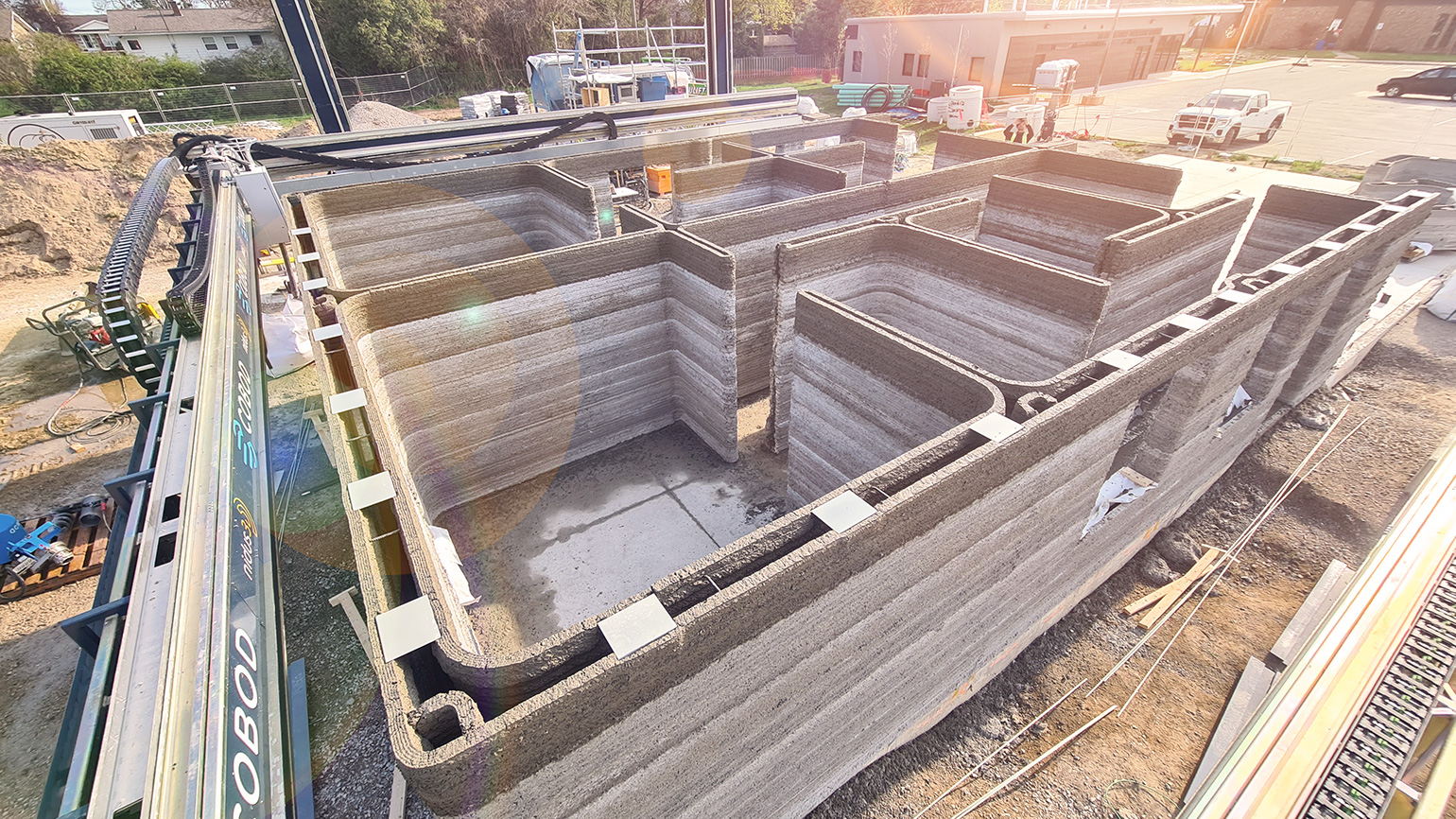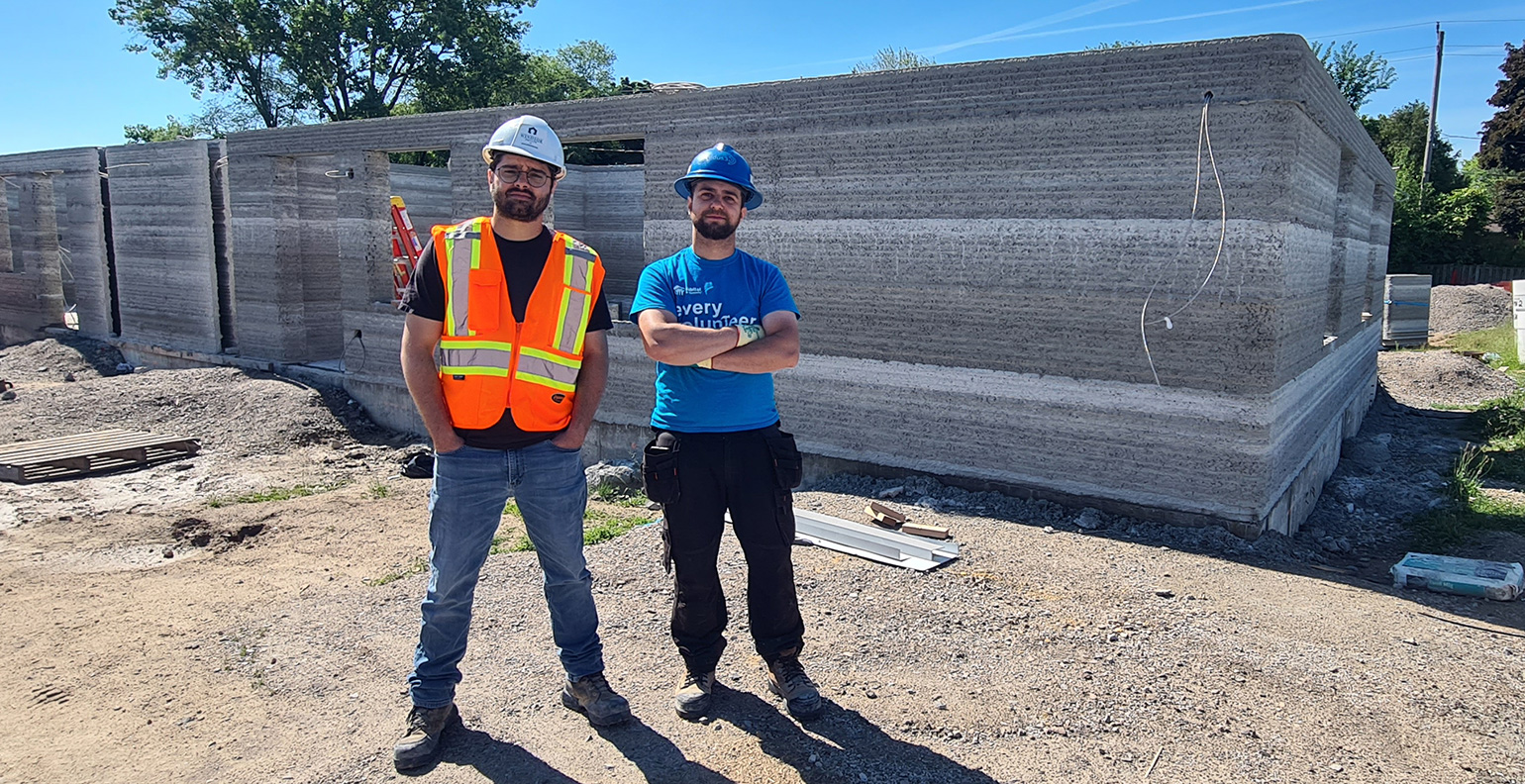
Walls, beams, and columns for a four-unit multiplex are printed by a gantry-mounted robot (a 3D concrete printer) in Leamington, ON. The housing project is a collaborative effort of Habitat for Humanity Windsor-Essex, the Bridge Youth Resource Centre, nidus3D, and researchers from the UWindsor Department of Civil and Environmental Engineering.
A housing project in Leamington has employed a unique means of construction: 3D printing.
A collaborative effort of Habitat for Humanity, the Bridge Youth Resource Centre, nidus3D, and the UWindsor Department of Civil and Environmental Engineering, it represents several firsts:
- the first time in Canada houses were printed onsite;
- the first multiplex printed in North America; and
- the first building in North America printed using traditional cement concrete rather than a proprietary mortar mix.
The last point is important, because it opens the door to making this means of construction more affordable, says professor Sreekanta Das.
“The current crisis in housing is dominating public discourse,” he says. “Increasing prices are making it impossible for many Canadians to own a home, and making the homeless problem worse.”
He says 3D printing has the potential to make houses less expensive. Robots can build the structural components: foundations, walls, beams, and columns, typically in just a week with three or four workers onsite.
“This technique saves labour, cost, and time and thus, makes houses cheaper,” Dr. Das says. “Digital construction technology also helps in solving the current labour shortage in the industry.”
In addition, he notes, 3D printing involves just a concrete printer, concrete mixer, and a lifting truck, reducing the air and noise pollution created by equipment and techniques in traditional construction.
His research team has been exploring 3D concrete printing and other innovative techniques such as modular construction to make houses affordable and environmentally sustainable.
The Leamington project, four units with a total living area of about 2,400 sq. ft. funded in part by the Canada Mortgage and Housing Corporation, involved doctoral students Marcos Gil Silveira and Bruno Paini along with Pamela Breault, director of operations for Habitat for Humanity Windsor-Essex.

Doctoral students Marcos Gil Silveira and Bruno Pain stand in front of a 3D printed concrete structure.
Das also received funding from the corporation for full-scale tests of printed walls and beams. Conducted at the Centre for Engineering Innovation, the tests measure important properties of the structural elements: strength, thermal resistance, ability to stand up to wind-driven rain, and more.
“The test data will help in developing design standards for practising engineers,” Das says. “Such design standards or design codes do not currently exist.”
His team is also developing printing materials that use waste products to replace Portland cement since production of Portland cement is responsible for 8-10% of total greenhouse gas emissions.
“Our goal is to develop environmentally-friendly materials for printing future homes,” says Das. “The target is to help Canada in achieving net-zero emissions by 2050.”
He says the researchers hope to print their next house with environmentally-sustainable materials they have developed.
For more information, please contact Dr. Sreekanta Das at sdas@uwindsor.ca.

